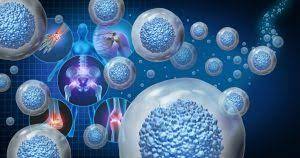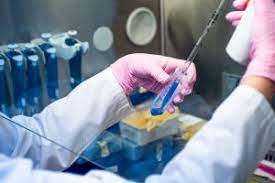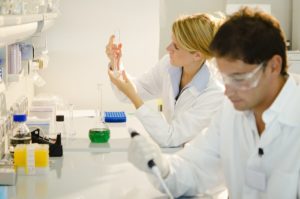What You Need To Know About Chattanooga sports medicine
 Sports medicine is an important branch of medicine, focused on helping athletes and active individuals improve their performance, prevent injuries, and get back to their daily activities in a safe and healthy manner. It is a multidisciplinary field, involving a variety of medical professionals, including orthopedic surgeons, physical therapists, athletic trainers, and nutritionists. If you’re looking for more tips, Chattanooga sports medicine has it for you.
Sports medicine is an important branch of medicine, focused on helping athletes and active individuals improve their performance, prevent injuries, and get back to their daily activities in a safe and healthy manner. It is a multidisciplinary field, involving a variety of medical professionals, including orthopedic surgeons, physical therapists, athletic trainers, and nutritionists. If you’re looking for more tips, Chattanooga sports medicine has it for you.
Sports medicine can be divided into two main categories: preventative care and treatment. Preventative care is focused on helping athletes stay healthy and injury-free by providing guidance on nutrition, hydration, and proper warm-up and cool-down practices. Treatment is focused on helping athletes recover from an injury and return to their sport in a safe and effective manner.
Injury prevention is an important part of sports medicine. It involves identifying potential risks and taking steps to reduce those risks. This can involve education on proper technique and form, as well as the use of protective gear and safety equipment. Injury prevention also includes educating athletes on proper nutrition and hydration, as well as the importance of rest and recovery.
When an athlete does sustain an injury, a sports medicine doctor will diagnose the injury and create a treatment plan. This may include physical therapy, medications, and/or surgery, depending on the severity of the injury. Physical therapy is a key component in sports medicine, as it helps athletes heal and strengthen the affected area, while also restoring range of motion and flexibility.
Sports medicine is not just for athletes. It can be beneficial to anyone who is active, including those who work out regularly or participate in recreational sports. It can also help those who have chronic illnesses, such as arthritis, or those who have suffered injuries due to accidents or falls.
No matter what your age or activity level, sports medicine can help you stay healthy and active. It is important to find a qualified sports medicine doctor who can assess your individual needs and create a plan that is tailored to your specific goals and lifestyle. With the help of a qualified sports medicine doctor, you can stay safe and improve your performance.
 Regenerative medicine is an area of medicine where human or animal cells are replaced with artificial ones. The idea is to use these artificial cells to replace tissues and organs in the body. Regenerative medicine is used to replace organs and tissues that have been destroyed by disease or injury. It is one of the most promising medical fields today. Get more informations of
Regenerative medicine is an area of medicine where human or animal cells are replaced with artificial ones. The idea is to use these artificial cells to replace tissues and organs in the body. Regenerative medicine is used to replace organs and tissues that have been destroyed by disease or injury. It is one of the most promising medical fields today. Get more informations of  Regenerative medicine is a new field of medical research that seeks to replace damaged organs and tissue with new ones. It uses cellular therapies, tissue engineering, medical devices, and artificial organs. While still a relatively new field, it has brought together experts in many fields. Here’s a brief overview of what it’s all about. Get more informations of
Regenerative medicine is a new field of medical research that seeks to replace damaged organs and tissue with new ones. It uses cellular therapies, tissue engineering, medical devices, and artificial organs. While still a relatively new field, it has brought together experts in many fields. Here’s a brief overview of what it’s all about. Get more informations of  At QC Kinetix Beaumont, we pride ourselves on being the leading provider of sports medicine in the area. We offer a wide range of services and programs that are designed to help you improve your health and well-being, and we’re dedicated to providing the highest quality care possible. Here are just a few of the reasons why we’re the best choice for sports medicine in Beaumont: Get more informations of
At QC Kinetix Beaumont, we pride ourselves on being the leading provider of sports medicine in the area. We offer a wide range of services and programs that are designed to help you improve your health and well-being, and we’re dedicated to providing the highest quality care possible. Here are just a few of the reasons why we’re the best choice for sports medicine in Beaumont: Get more informations of  Regenerative medicine is a new field of medicine that uses specialized techniques to repair tissues. These techniques use small molecules and cell structures to promote the growth and reproduction of cells. These cells are typically found in tissue, which can include blood, skin, bone, and muscle. One of the methods for regenerating tissue is stem cell therapy. This method involves growing specialized stem cells in the laboratory. These cells are then instructed to behave like specific types of cells. Get more informations of
Regenerative medicine is a new field of medicine that uses specialized techniques to repair tissues. These techniques use small molecules and cell structures to promote the growth and reproduction of cells. These cells are typically found in tissue, which can include blood, skin, bone, and muscle. One of the methods for regenerating tissue is stem cell therapy. This method involves growing specialized stem cells in the laboratory. These cells are then instructed to behave like specific types of cells. Get more informations of  Regenerative medicine is a branch of medicine that deals with the regeneration of cells, tissues, and organs. The goal of
Regenerative medicine is a branch of medicine that deals with the regeneration of cells, tissues, and organs. The goal of  Regenerative medicine has the potential to revolutionize disease treatment. It can be used to treat congenital abnormalities such as corneal adenoma and thalassaemia. This technology uses gene transfection to enhance the properties of cells in a tightly controlled process. This technology may one day replace whole organs or even parts of the body. Get more informations of
Regenerative medicine has the potential to revolutionize disease treatment. It can be used to treat congenital abnormalities such as corneal adenoma and thalassaemia. This technology uses gene transfection to enhance the properties of cells in a tightly controlled process. This technology may one day replace whole organs or even parts of the body. Get more informations of  There are many treatment options for joint pain, including medication, physical therapy, and topical pain relievers. These methods can help with inflammation in the joint and increase mobility, as well as help the joint heal quickly. A joint pain treatment review will provide information about the best methods for treating the pain as well as potential side effects and risks. Get more informations of
There are many treatment options for joint pain, including medication, physical therapy, and topical pain relievers. These methods can help with inflammation in the joint and increase mobility, as well as help the joint heal quickly. A joint pain treatment review will provide information about the best methods for treating the pain as well as potential side effects and risks. Get more informations of